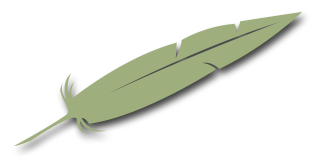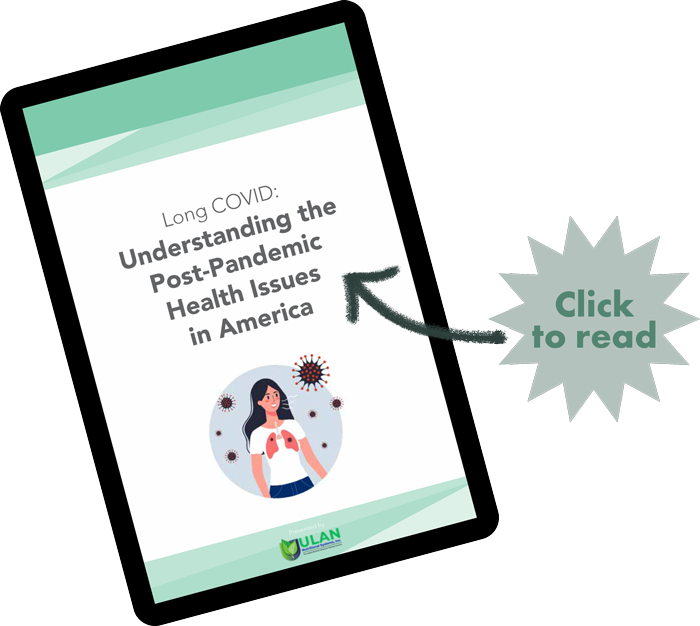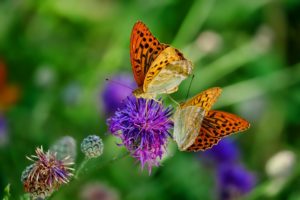- WE MOVED !!!
-
 Professional Acupuncture & Physical Therapy1118 East Superior Street
Professional Acupuncture & Physical Therapy1118 East Superior Street
Duluth, MN 55802(218) 724-3400 Clinic Hours
Mon8:00 am - 4:30 pmTue1:45 pm - 4:30 pmWed8:00 am - 4:30 pmThu8:00 am - 4:30 pmFriCLOSED

- Long Covid Booklet
Blog
A Natural Solution for PMS

Extreme fatigue, depression, severe abdominal cramps, food cravings. Premenstrual syndrome (PMS) is one of the most common women’s health conditions that completely lacks any reliable Western medical treatment for its symptoms. Yet it’s part of many people’s regular menstrual pattern.
So many women suffer from severe side effects of PMS—so much so that it affects their daily lives for at least a few days every single month.
While the painful and disruptive PMS are naturally occurring and there’s no way to get rid of them completely (after all, menstrual symptoms are messages from the body asking for rest and care!), Traditional Chinese Medicine offers a natural solution that may be even more effective than medication.
Can Acupuncture & Acupressure Ease PMS?
An analysis of 15 studies with over 1000 subjects found that acupressure can reduce moderate to severe PMS symptoms.
An analysis of 15 studies found that acupuncture treatment was significantly effective in treating PMS, compared with medicine and sham acupuncture. While more, larger studies are needed to fully confirm the scientific evidence of acupuncture to treat Premenstrual Syndrome symptoms, there is a slew of promising research to back it. Since PMS has such varied effects on different women—from moodness to severe abdominal pain—there are also a variety of ways acupuncture and TCM may be used to help. In particular, studies show that acupuncture and acupressure are sure-fire solutions for mood swings, depression, pain, and anxiety—some of the major symptoms of PMS.
The most commonly used acupoints for PMS treatment are SP6, LR3, and RN4.
Other Natural Treatments
There are a variety of natural, personalized solutions for the debilitating aggravation of PMS. If you’re a person who experiences PMS symptoms, you know it can be quite the journey with advice, experimentation, and routine to discover what works best for you. Here are some tips that experts agree help reduce the pain and discomfort of PMS:
- Get plenty of rest!
- Choose foods high in complex carbohydrates and rich in calcium.
- Avoid caffeine and alcohol.
- Try supplements like calcium, magnesium, and vitamin B6 can also help.
- Move your body gently. Exercise helps the body regulate our mood and gets blood flowing to sore muscles and organs.
- Chasteberry extract, though not sufficiently scientifically studied, is reported to have helpful effects on swelling and pain.
- Keep track of your cycle, symptoms, and treatments, to help figure out what works best for you—and, at least, to be prepared!
- Schedule an acupuncture appointment a few days before you begin menstruating! Planning for PMS before it happens can be one of the best ways to avoid a pitfall when that time rolls around.
Sources:
Acupuncture for PMS at Different Intervention Time
https://www.ncbi.nlm.nih.gov/pmc/articles/PMC6614973/
Joint Health & Traditional Chinese Medicine

Arthritis is one of the most common joint ailments, affecting over 54 million adults in the United States. Caused by a swelling of the joints, it can range from bothersome to extremely painful and can be a hindrance to everyday activities. Arthritis, along with other types of joint health issues, can be one of the most life-altering conditions to live with—because it can hinder everything from one’s ability to get regular exercise to how much someone can go to work.
Thankfully, applications of Traditional Chinese Medicine (TCM) and acupuncture can be amazingly helpful as arthritis treatments and general joint health maintenance protocol.
Within the theory of TCM and acupuncture, our essential life energy or qi (pronounced “chee”) flows along the meridians of the body. When the flow is constricted or imbalanced, we may experience illness or pain. The needles used in acupuncture are carefully placed along points connected to the meridians, stimulating those places to correct and encourage the flow of energy.
In TCM, the entire body is understood as a multifaceted mechanism whose parts function in concert—not silo-ed sections to be treated in isolation.
Various studies, including one by the Center for Integrative Medicine at the University of Maryland School of Medicine, found that patients felt significantly less pain and had an easier time walking after receiving legitimate acupuncture treatments.
Treating Rheumatoid Arthritis
There are many different types of arthritis, some with very few treatment options as dictated by Western Medicine.
Rheumatoid arthritis (RA) is one variety that can be hugely disruptive to sufferers’ lives. RA is a chronic systemic autoimmune disease that’s linked with progressive joint damage, resulting in severe chronic pain and long-term mobility issues.
Western medicine comes up short when trying to treat RA. Yet many clinical trials have shown that Traditional Chinese Medicine (TCM) has advantages in the treatment of RA.
Osteoarthritis & Preventing Knee Replacement
Another common and very detrimental type of arthritis is osteoarthritis, particular in the knee joints, and especially affecting older adults. When knee osteoarthritis gets severe enough, total knee replacement is the final treatment option.
A wide-ranging study of over 34,000 patients in Taiwan showed that TCM treatments reduced risk of total knee replacement in patients with knee osteoarthritis, and that enhanced benefits results from long-term treatment. The longer a patient used TCM, the less likely they were to need a knee replacement.
Sources:
NCBI Article
Medicine Article
Arthritis Foundation Article
Managing Arthritis Naturally

Arthritis can be one of the most life-altering and unpleasant common pain conditions. Caused by a swelling of the joints, it can range from bothersome to extremely painful and can be a hindrance to everyday activities. Arthritis is also associated with other chronic health conditions like heart disease, diabetes, obesity, and high blood pressure.
Over 54 million adults in the United States are affected by arthritis. That’s one in four adults! Interestingly, it is more common in rural areas. Arthritis is the number one cause of disability in the United States.
That means millions of people aren’t able to work or are limited in their ability to work, are missing out on life-enhancing activities and travel, and may be in near-constant pain due to arthritis.
Thankfully there are a multitude of ways to manage arthritis and the pain that so inhibits sufferers’ lives.
Acupuncture For Arthritis
When you consider that Traditional Chinese Medicine (or TCM) dates back over 3,000 years, it is easy to see the vastness of theory and history involved. This complementary medicine arms practitioners with a plethora of unique diagnostic tools. These tools include an ability to detect Qi imbalances, define the underlying problems and correct them.
Many clinical studies support acupunctures ability to be an effective treatment for arthritis. In addition to the increased production of endogenous opioid endorphins (the body’s natural pain-relieving chemicals), acupuncture is a great option to keep in mind to reduce swelling and increase range of motion safely, naturally and without harmful side effects.
Managing Arthritis
Move!
“Motion is lotion,” you may have heard a physical therapist, chiropractor, or acupuncturist say. Movement can help reduce arthritic swelling and pain, and is a sure-fire mood-booster that can also help manage those conditions that are common in conjunction with arthritis. It’s important that people suffering from arthritis choose low-impact exercise and only engage in physical activity that feel safe.
Reduce Stress
Stress has a big impact on the body’s ability to heal itself, especially when it comes to inflammatory conditions such as arthritis. The pain of arthritis can also contribute to stress, creating a vicious cycle.
Making sure you are taking care of your mental and emotional health by making self-care time, getting exercise and outdoor time, and having a mindfulness routine can all help manage daily stress.
The Mediterranean Diet
No diet can cure arthritis outright, but you have a full table of options when it comes to foods that can help fight inflammation and pain.
Often called the The Mediterranean Diet (because, well, it’s common in the Mediterranean regions!), a diet low in processed food and full of fruits, vegetables, fish, nuts and beans, and healthy oil can greatly reduce the symptoms of arthritis. Plus, it’s just good for you!
How Does Color Affect Our Moods?
 Ancient ancient cultures, including the Egyptians and Chinese, utilized chromotherapy or color therapy to heal and stimulate the body and mind.
Ancient ancient cultures, including the Egyptians and Chinese, utilized chromotherapy or color therapy to heal and stimulate the body and mind.
Modern science confirms that different colors do indeed have an impact on our attention, energy, focus, mood, and even memory and wellbeing. Colors are associated with different emotions and energy states. For example, a 2014 study of college student’s interior spaces suggested that vivid colors may enhance short-term memory and improve cognitive function.
It’s easy to understand that different colors affect our brains and bodies differently when we consider that color is “simply” different wavelengths falling upon our eyes and stimulating our brains. In fact, Isaac Newton discovered this while in quarantine during The Great Plague of London in 1666! How relevant.
When light reflects into the human eye, it stimulates the hypothalamus—the part of our brain that governs hormone and endocrine systems, our body temperature, appetite, sexual functions, sleeping, and behavioral patterns, and so much more.
Color Therapy
Color psychology (how colors affect our mood and bodies) and color symbolism (cultural ideas associated with colors) are distinct but connected. They both come from traditional ideas and human observation and relate to how we interact with and are affected by the world around us.
Feng shui, a practice connected to Traditional Chinese Medicine and its healing modalities, is the art of creating harmony in our interior spaces. Feng shui is informed by how our personal energy relates to the natural world and our environment. While the complex system of feng shui governs spatial arrangement and orientation in relation to the flow of energy or Qi (pronounced “chee”), we can see how color therapy is related to the principles of feng shui.
How do the primary colors of red, blue, yellow, and green and their combinations and variations affect us psychologically?
Red: Associated with power, danger, heat and aggression. Red is stimulating and attention-grabbing.
Yellow: Joy, humor, and playfulness. Also associated with hope, creativity, self-esteem and purification.
Green: Green is a calming color, perhaps because it reminds us of nature. It can help people feel comfortable in new environments and is associated with universal love, environmental awareness, and peace. Studies have shown that being in a green environment can reduce heart rate (as compared to a red or white environment).
Blue: Blue encourages intellectual activity, can lower blood pressure, and is soothing. Depending on the intensity, blue can either stimulate intellectual activity (bright blue) or calm the mind and aid concentration (softer blue).
Next time you’re redecorating, getting dressed, or visiting your acupcuntursist’s office, consider how your mindset and energy change as you engage with different colors. You might be surprised!
Sources:
1: The Effects of Color on the Moods of College Students: Sevinc Kurt, Kelechi Kingsley Osueke (2014)
2: Color and psychological functioning: The effect of red on performance attainment: Elliot, A. J., Maier, M. A., Moller, A. C., Friedman, R., & Meinhardt, J. (2007)
3. Adaptive Effects of Seeing Green Environment on Psychophysiological Parameters When Walking or Running: Walid Briki, Lina Majed (2019)
Research Update – The Benefits of Walking Barefoot
 Getting outside does the body good. There are scores of scientific studies that confirm just how good! But “earthing” takes a walk outside to another, deeper, more healing level.
Getting outside does the body good. There are scores of scientific studies that confirm just how good! But “earthing” takes a walk outside to another, deeper, more healing level.
What Is Earthing?
Also called “grounding,” earthing simply means walking barefoot on a natural surface like grass, soil, or sand. It’s important to remember that it is different than just walking outside, although that, too, is beneficial in so many ways. Making direct physical contact with the ground—and that doesn’t mean concrete or other man-made surfaces—is what it’s all about.
The prominence of the element carbon is what designates something as organic matter—and I don’t mean “organic” like your groceries! All living things are carbon-based. If you do any gardening or backyard composting, you’ll probably recognize that term, “carbon-based,” as the “green” stuff you put in your compost: leaves, grass trimmings, veggie cast-offs.
Earthing is also different from forest bathing, or shinrin-yoku, which is the Japanese practice of fully immersing oneself in nature.
How Earthing Works in Your Body
There are so many studies that confirm how beneficial earthing is for our bodies and minds. A research review led by Gaétan Chevalier of multiple studies published in the Journal of Environmental and Public Health illustrates how earthing has been shown to reduce stress, support immunity, help moderate heart rate and glucose levels, and even help wounds heal faster.
While there is still a lot to learn about how connecting physically with Earth affects our bodies, research shows that it has a lot to do with electrons and electromagnetic charge. Walking barefoot on organic surfaces actually changes the electrical activity of our brain.
It can even produce “measurable differences in the concentrations of white blood cells, cytokines, and other molecules involved in the inflammatory response,” according to the review by Chevalier.
Amazingly, this presence of carbon seems to be what makes carbon-fiber mattresses so helpful for better sleep and pain relief!
According to a study in The Journal of Alternative and Complementary Medicine, earthing may even help improve the function of red blood cells, a major factor in heart disease. Another study shows that earthing may help regulate both the endocrine and nervous systems.
Earthing is an amazing addition to your wellness care routine, just like regular acupuncture visits. Let’s schedule you for a spring tune-up to make sure you’re as healthy as you can be!
Sources:
Earthing: Health Implications of Reconnecting the Human Body to the Earth’s Surface Electrons, Gaétan Chevalier, Stephen T. Sinatra, James L. Oschman, Karol Sokal, Pawel Sokal
The effects of grounding (earthing) on inflammation, the immune response, wound healing, and prevention and treatment of chronic inflammatory and autoimmune diseases, James L Oschman, Gaétan Chevalier, and Richard Brown
Earthing the Human Body Influences Physiologic Processes, Karol Sokal, MD, PhD, and Pawel Sokal, MD, PhD
